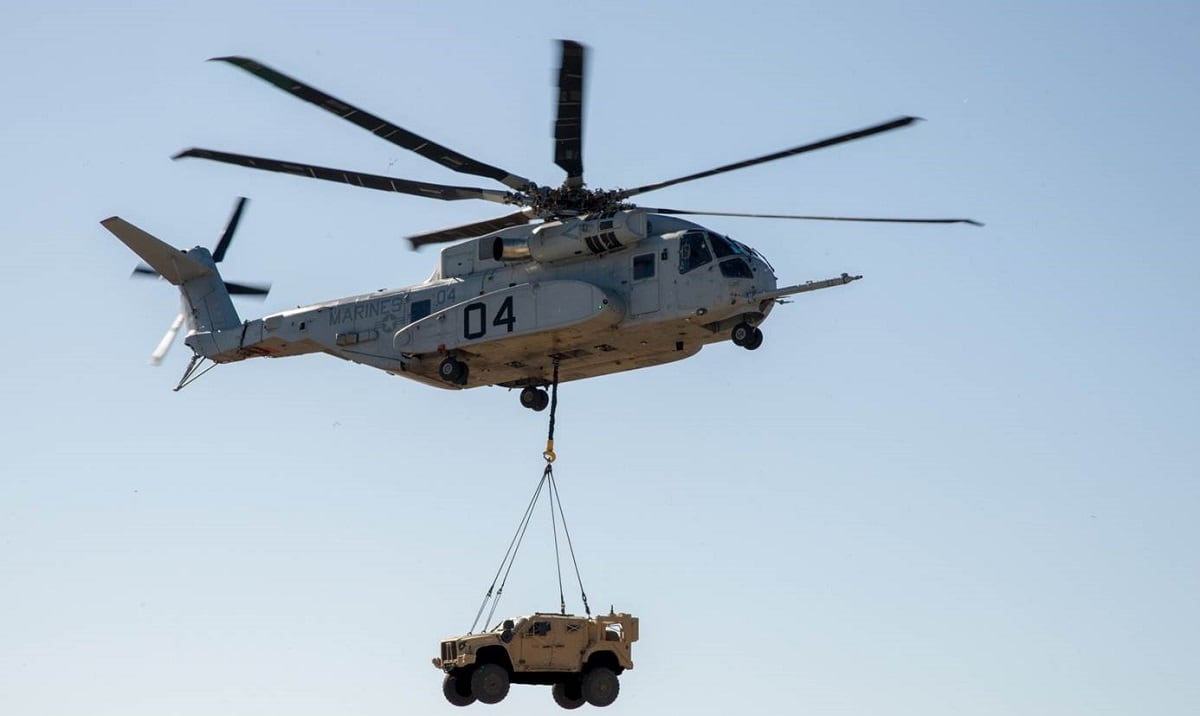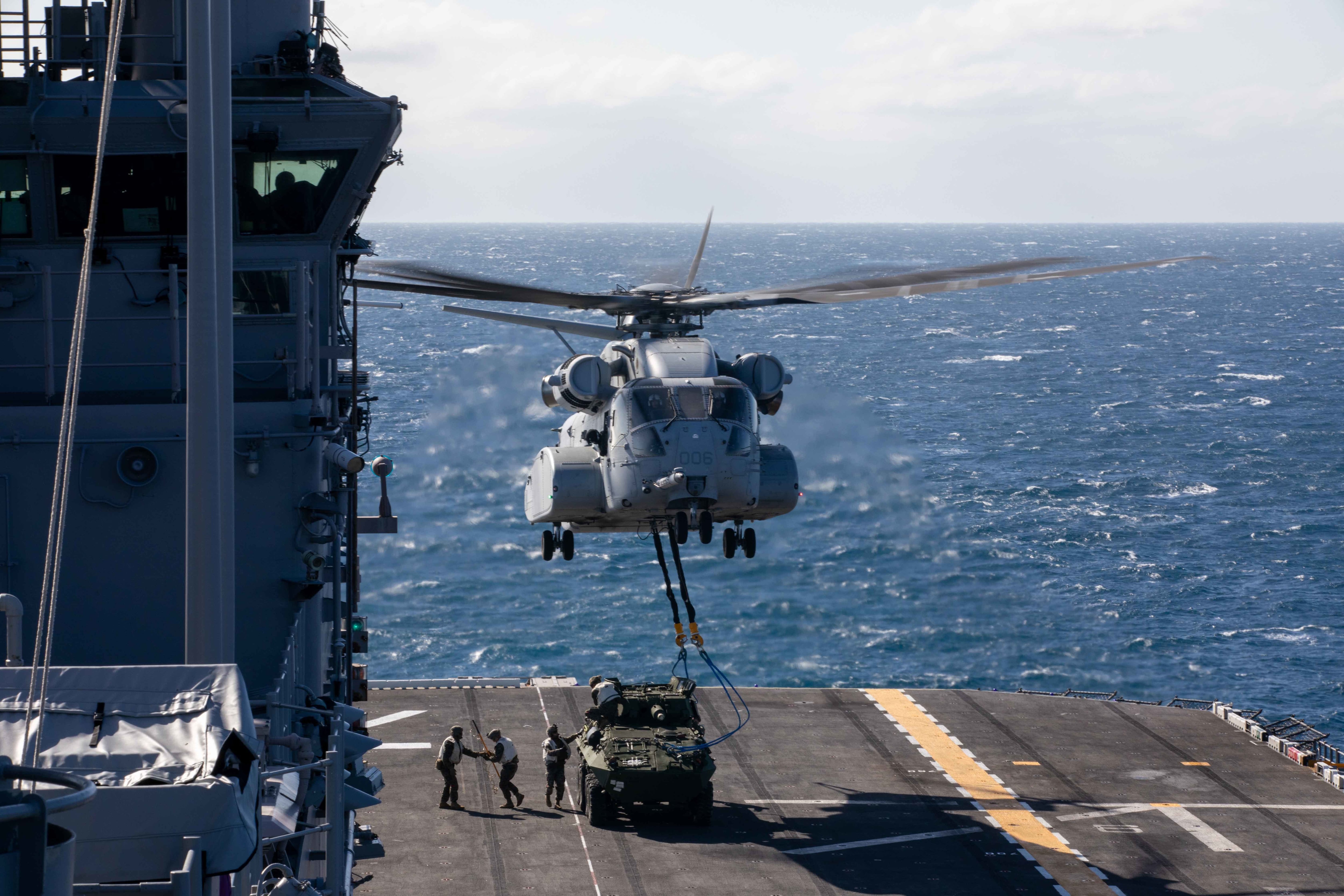Marines recently transported a 12-ton light armored vehicle from an amphibious assault ship to shore with a testing version of the Corps’ most workhorse of helicopters.
The Marine Operational Test and Evaluation Squadron One, or VMX-1, did the over-the-horizon heavy lift and troop transport ship-to-shore maneuver over the Atlantic Ocean from Nov. 19–21 using the CH-53K King Stallion helicopter, according to a Marine Corps statement.
Moving such heavy gear and troops is key to future combat operations concepts such as expeditionary advanced base operations that the Marines are leaning into so that they can enable naval forces in future fights.
The CH-53K’s lift ability of 12 tons is three times the amount of the previous CH-53E variant, according to a report from the Pentagon’s Department of Test and Evaluation.
RELATED

The King Stallion carried the LAV-25 from the amphibious assault ship Iwo Jima covering an estimated 220 nautical miles roundtrip, according to the statement.
Marines with Combat Logistics Battalion 24, CLB-24, and 2nd Battalion, 2nd Marine Regiment, out of Camp Lejeune, North Carolina, assisted VMX-1, as did sailors from the Iwo Jima, according to the statement.
The Corps is running initial operational tests and evaluations of the CH-53Ks prior to fielding.
“We have the most professional and capable individuals maintaining the aircraft and are also appreciative to the Blue-Green Team, who demonstrate the superb ability to operate harmoniously,” said VMX-1 CH-53K Detachment Operations Officer Maj. Joshua Banks.
In September Marines used two CH-53Ks to recover a Navy MH-60S Knighthawk helicopter in the White Mountains of California. That was the first official fleet mission for the new helicopter, even as it has been running through tests and evaluations.
The Naval Safety Center contacted the Marines at the time with a request for assistance, said Lt. Col. Luke Frank, CH-53K detachment officer.
The Knighthawk had made a hard landing in July at about 12,000 feet in a rugged area of the mountain range. The four-person crew was searching for a lost hiker. All crew members were rescued and reported no injuries.
Previous efforts, which included National Guard and Navy and Marine Corps fleet squadrons, to extract the aircraft were unsuccessful.
A 25-Marine team ran the mission and retrieved the 15,200-pound helicopter, which was wedged in a tight ravine when recovered.
In mid-2020 a report noted that testers had to limit the CH-53K’s operation in dust clouds to 70 seconds because testing had shown engine performance degradation after 21 minutes of cumulative brownout exposure.
“Engine performance degradation in brownout conditions will necessitate extremely frequent engine replacements and repair if the Marine Corps continues to train and operate in locations where brownout conditions are prevalent,” according to the report.
“CH-53K aircrew cannot realistically perform external cargo delivery operations within the 70-second operating limit.”
Helicopter manufacturer Sikorsky released a statement following the published report that the company was already “addressing technical issues” cited in the report and that the majority of them had been resolved.
Todd South has written about crime, courts, government and the military for multiple publications since 2004 and was named a 2014 Pulitzer finalist for a co-written project on witness intimidation. Todd is a Marine veteran of the Iraq War.




